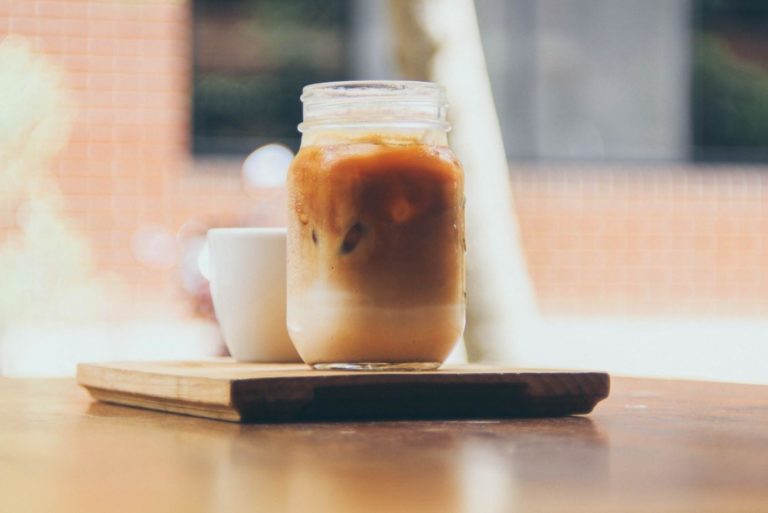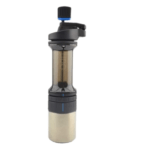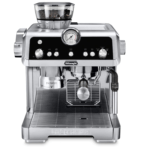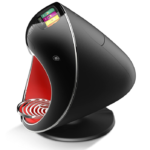How to Make Cold Brew Coffee at Home with Your French Press
Nothing beats a steaming cup of joe on an icy winter morning or a tall, creamy iced on a sizzling summer afternoon, but cold brews are today’s hot new year-round trend. Cold Brew Coffee is now favored in coffee shops around the country, maybe it’s worth finding out what the buzz is about.

First, let’s clarify what cold-brew is not — iced coffee. Iced coffee is the same hot-brew most of us have with breakfast but served over ice. Cold-brew is made by steeping your favorite coffee grounds in water for up to a day to produce a rich, but very different tasting drink.
It may be a craze, but it isn’t a new idea. Cold brew has been around as long as coffee has and the process isn’t exactly rocket science, so why is this new-old way of brewing surging in popularity to the tune of five bucks per teeny tiny cup? Let’s find out.
Cold brews are all the rage — but what’s the big deal?
Cold-brewing not only amps up coffee’s flavor — it solves more than a few of its problems, starting with acidity. When coffee is hot-brewed, it releases volatile oils and with it, acid. Cold brew is two-thirds less acidic than your usual morning jolt, and if you regularly have to pass on the pleasure of a second cup because your stomach feels like molten lava, you’ll appreciate it’s rich, but mellow simplicity.
Cold-brew also has significantly less caffeine than hot-brew — another point in its favor for those with heartburn or reflux, but because it lacks bitterness, it’s often consumed in a higher concentration, so that levels the playing field a little if rocket fuel is what you’re looking for.
Traditionalists complain that cold brew lacks the spark of brightness acidity conveys — and they have a point. Cold-brew doesn’t taste like hot coffee. It isn’t as edgy or sharp, but it’s also less bitter — so it doesn’t need a lot of sugar and cream — and each note of acidity lost makes room for subtle flavors that acid usually overpowers — sweet hints of fruit, nut, chocolate and more.
The sole drawback to cold-brew is the time it takes to make. The first part of the process — mixing your fresh, coarsely-ground beans in water — takes just seconds, but without heat, it needs to steep like tea for at least 12 hours for its full flavor to develop. The good news is that as long as you get tomorrow’s pot started right after today’s is poured, cold-brew takes less time to make than flipping a switch on a Mr. Coffee, and it stays fresh in the refrigerator for up to two weeks.
Why make cold brew coffee in your French press?
Why make cold brew in a French press? If you own one, that’s almost a silly question! Cold-brew can be made in any glass jar, but since French presses are little more than carafes with plungers, they’re ideal for both extracting maximum flavor and filtering out grounds.
When made without a press, cold brew is filtered manually — pouring it through a fine mesh strainer lined with traditional paper filters usually does the trick. But removing grounds from French press cold brew is as easy as plunging. Depending on the ratio of grounds to water used, you’ll have clear coffee that’s ready to drink or an extra-strong concentrate to cut with water. Either way, you get a cup that’s smooth and exceptionally full-bodied at a fraction of the coffee bar price.
Why does this work?
Water is the universal solvent and when it’s mixed with ground beans, chemical reactions that give coffee its characteristic taste occur. Hot water makes this process happen faster, but it also creates acid and degrades compounds that carry delicate flavors, and the result is usually bitterness.
Using cold water preserves those flavors and reduces acidity, but it takes more time — 12 to 24 hours of prolonged exposure for full extraction. That’s a long wait when you need coffee right now, but the trade-off is a whole new dimension of exciting flavors.
How to Make Cold Brew French Press Coffee
If you’ve never made espresso at home because of its complexity — making low-tech French press cold brew is an absolute pleasure. Of course, every aficionado has an opinion on which coffee to water ratio is best, which temperature is ideal to store it at and how long to steep it for optimal flavor.
As an up and coming connoisseur, our suggestion is to experiment based on these simple instructions for 16 ounces of ready-to-drink cold brew French press coffee. Adapt the proportions for your size press and remember that this is just a starting point. If the brew is too strong, cut it with water, milk or cream. To create a stronger concentrate, add more grounds.
- Start with your favorite fresh, high-quality whole coffee beans.
- Grind enough to make 2 ounces, or 4 tablespoons, of a medium-coarse to coarse grind. Measure it carefully, and then add it to your French press.
- Pour 16 ounces of room temperature water over the grounds and stir it gently until all they’re all saturated. That’s a 1:8 ratio of ground coffee to water.
- Cover the carafe with plastic wrap — a rubber band around the top will keep it tightly sealed.
- Let it steep on the counter or in the refrigerator for 12 to 24 hours. The longer it sits, the more the flavor develops.
- Plunge and serve it as-is, over ice, or warm it in the microwave.
The beauty of cold brew is that it’s the easiest way on Earth to make coffee. Brewing it at home makes it affordable, and the process is a cinch to adapt with a little patience. It’s not necessarily a replacement for favorite brewing method — it’s just a new way of enjoying what you already love. Life’s too short to not try every type of coffee. You won’t believe what you’ve been missing.





